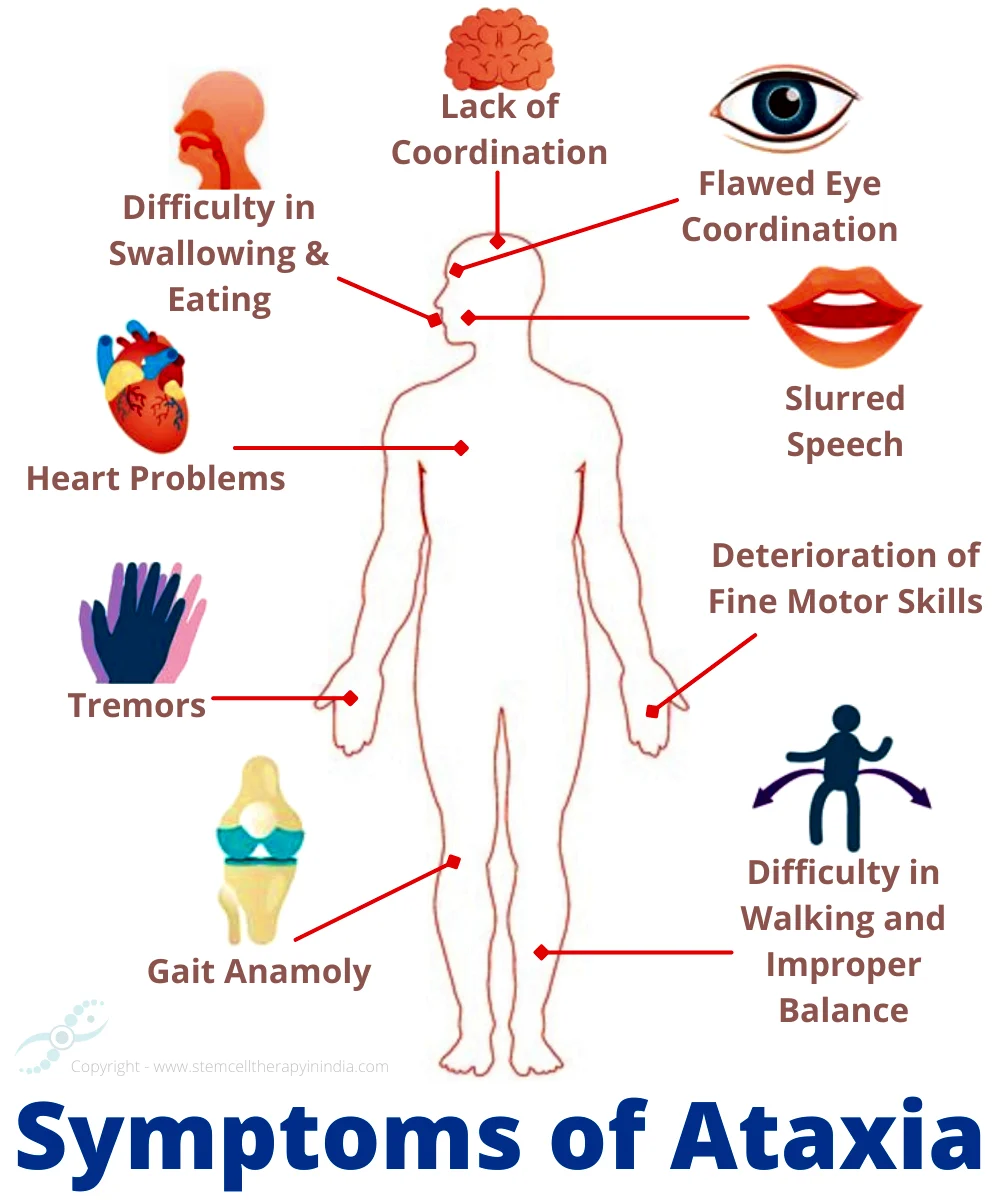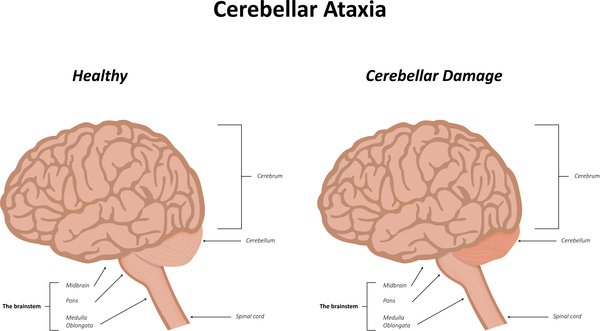Nursing Paper Example on Ataxia: Understanding a Neurological Disorder
Nursing Paper Example on Ataxia: Understanding a Neurological Disorder
Causes
Ataxia, a neurological disorder characterized by impaired coordination and balance, arises from a variety of causes, encompassing both genetic and acquired factors. Genetic forms of ataxia, such as Friedreich’s ataxia and spinocerebellar ataxias, result from inherited gene mutations affecting nerve tissue in the spinal cord and peripheral nerves. These genetic mutations disrupt the normal functioning of nerve cells, particularly those in the cerebellum, a brain region crucial for coordinating movements.
In addition to genetic predispositions, ataxia can also stem from acquired conditions or environmental factors. Traumatic brain injury, stroke, and brain tumors can damage the cerebellum or its connections, leading to ataxic symptoms. Moreover, certain infections, such as viral encephalitis or bacterial meningitis, can cause inflammation and injury to the brain regions involved in motor control, contributing to the development of ataxia.
Toxin exposure represents another potential cause of ataxia. Alcohol misuse, for instance, can lead to cerebellar degeneration, resulting in a specific type of ataxia known as alcoholic cerebellar ataxia. Similarly, exposure to certain chemicals or medications, such as phenytoin or lithium, may induce ataxic symptoms through their neurotoxic effects on the cerebellum.
Furthermore, ataxia can manifest as a secondary symptom of underlying conditions such as multiple sclerosis, where demyelination disrupts nerve signals essential for coordinated movement. Metabolic disorders like vitamin B12 deficiency or hypothyroidism can also present with ataxia due to their impact on nerve function.
Overall, the causes of ataxia are diverse and multifactorial, ranging from genetic predispositions to acquired conditions and environmental exposures. Understanding the underlying etiology of ataxia is crucial for accurate diagnosis and targeted management strategies tailored to individual needs. (Nursing Paper Example on Ataxia: Understanding a Neurological Disorder)
Signs and Symptoms
Ataxia presents a constellation of signs and symptoms primarily affecting coordination, balance, and motor control. These manifestations can vary in severity and progression, depending on the underlying cause and individual factors.
One of the hallmark symptoms of ataxia is an unsteady gait, characterized by a wide-based stance and difficulty maintaining balance while walking. Individuals with ataxia may exhibit a staggering or lurching gait, often described as being “drunk-like” in appearance. This impairment in walking ability can significantly impact mobility and increase the risk of falls.
In addition to gait disturbances, ataxia commonly manifests as difficulties with coordination and fine motor skills. Tasks requiring precise movements, such as writing, buttoning clothes, or using utensils, may become challenging for individuals with ataxia. Hand tremors and clumsiness are frequently observed, reflecting the underlying disruption in motor control.
Speech abnormalities are another prominent feature of ataxia, often presenting as slurred or dysarthric speech. Individuals may struggle to articulate words clearly and may exhibit irregularities in speech rhythm and intonation. These speech difficulties can interfere with communication and contribute to social and functional impairments.
Furthermore, ataxia can affect eye movements, leading to nystagmus or abnormal eye oscillations. Nystagmus, characterized by rhythmic involuntary movements of the eyes, can impair visual acuity and coordination, exacerbating balance difficulties.
Beyond motor symptoms, individuals with ataxia may experience additional neurological manifestations. Sensory deficits, including numbness or tingling in the limbs, are sometimes reported, reflecting the involvement of sensory pathways in the nervous system.
Overall, the signs and symptoms of ataxia encompass a spectrum of motor and neurological impairments, impacting various aspects of daily functioning. Recognizing these manifestations is crucial for timely diagnosis and appropriate management to optimize outcomes for individuals affected by this neurological disorder. (Nursing Paper Example on Ataxia: Understanding a Neurological Disorder)

Etiology
The etiology of ataxia is diverse, encompassing genetic, acquired, and environmental factors that contribute to the development of this neurological disorder. Understanding the underlying causes is essential for accurate diagnosis and appropriate management strategies tailored to each individual’s specific condition.
Genetic forms of ataxia represent a significant subset of cases, arising from inherited gene mutations that affect nerve tissue in the spinal cord and peripheral nerves. Spinocerebellar ataxias (SCAs) and Friedreich’s ataxia are among the most common genetic forms, characterized by progressive degeneration of the cerebellum and its connections. These mutations disrupt the normal functioning of nerve cells involved in motor coordination, leading to the characteristic symptoms of ataxia.
Acquired conditions can also precipitate ataxia, including neurological disorders such as stroke, traumatic brain injury, and brain tumors. Damage to the cerebellum or its connections due to these conditions interferes with motor control and coordination, resulting in ataxic symptoms. Additionally, certain infections, such as viral encephalitis or bacterial meningitis, can cause inflammation and injury to brain regions involved in motor function, contributing to the development of ataxia.
Environmental factors, including toxin exposure, represent another potential etiological factor in ataxia. Chronic alcohol misuse can lead to cerebellar degeneration, resulting in alcoholic cerebellar ataxia. Similarly, exposure to certain chemicals or medications, such as phenytoin or lithium, may induce ataxic symptoms through their neurotoxic effects on the cerebellum.
Furthermore, ataxia can manifest as a secondary symptom of underlying systemic or metabolic disorders. Conditions such as multiple sclerosis, vitamin B12 deficiency, and hypothyroidism can present with ataxia due to their impact on nerve function and neurotransmitter balance.
Overall, the etiology of ataxia is multifactorial, involving a complex interplay of genetic predispositions, acquired conditions, and environmental influences. Comprehensive evaluation and diagnostic workup are necessary to identify the underlying cause and guide targeted management approaches for individuals affected by this neurological disorder. (Nursing Paper Example on Ataxia: Understanding a Neurological Disorder)
Pathophysiology
DMS-5 Diagnosis
Diagnosing ataxia involves a comprehensive evaluation guided by the criteria outlined in the Diagnostic and Statistical Manual of Mental Disorders, Fifth Edition (DMS-5). The DMS-5 provides a standardized framework for diagnosing neurological disorders, including ataxia, based on specific criteria and clinical features.
To establish a diagnosis of ataxia according to DMS-5 criteria, healthcare professionals conduct a thorough clinical assessment, including a detailed medical history, physical examination, and neuroimaging studies. The presence of characteristic signs and symptoms, such as impaired coordination, unsteady gait, slurred speech, and abnormal eye movements, is essential for identifying individuals with ataxia.
Additionally, the DMS-5 emphasizes the importance of differentiating between primary and secondary forms of ataxia. Primary ataxias, including genetic forms such as spinocerebellar ataxias (SCAs) and Friedreich’s ataxia, result from inherited gene mutations affecting nerve tissue in the cerebellum. Secondary ataxias, on the other hand, arise from acquired conditions or underlying systemic disorders, such as stroke, traumatic brain injury, or multiple sclerosis.
Neuroimaging studies, including magnetic resonance imaging (MRI) of the brain and spine, play a crucial role in confirming the diagnosis of ataxia and identifying underlying structural abnormalities or lesions in the cerebellum and its connections. Additionally, genetic testing may be recommended to identify specific gene mutations associated with hereditary forms of ataxia.
Furthermore, the DMS-5 underscores the importance of considering differential diagnoses and ruling out other neurological conditions that may present with similar symptoms. Conditions such as Parkinson’s disease, essential tremor, and vestibular disorders can mimic certain features of ataxia, necessitating careful clinical evaluation and diagnostic testing to differentiate between them.
Overall, the DMS-5 provides a comprehensive framework for diagnosing ataxia, incorporating specific criteria, clinical features, and diagnostic tests to accurately identify individuals with this neurological disorder and guide appropriate management strategies tailored to their specific needs. (Nursing Paper Example on Ataxia: Understanding a Neurological Disorder)
Treatment Regimens and Patient Education
Managing ataxia requires a multidisciplinary approach aimed at addressing both motor symptoms and enhancing overall quality of life. Treatment regimens for ataxia encompass various therapeutic interventions, including pharmacological, rehabilitative, and supportive strategies. Moreover, patient education plays a crucial role in empowering individuals with ataxia to actively participate in their care and optimize their functioning.
Pharmacological Interventions: While there is no cure for ataxia, certain medications may help alleviate symptoms and improve functional outcomes. Pharmacological interventions primarily target symptom management and may include medications to address specific symptoms such as tremors, muscle stiffness, or spasticity. For example, medications like baclofen or tizanidine may be prescribed to reduce muscle stiffness and spasticity, while anticonvulsants such as gabapentin or pregabalin may help alleviate neuropathic pain associated with ataxia.
Rehabilitative Therapies: Physical and occupational therapy are cornerstone components of rehabilitative care for individuals with ataxia. Physical therapy focuses on improving balance, coordination, and mobility through targeted exercises and gait training. Occupational therapy aims to enhance independence in activities of daily living by addressing fine motor skills, adaptive techniques, and assistive device use. These therapies are tailored to individual needs and may incorporate specialized equipment or adaptive strategies to optimize functional outcomes.
Speech and Swallowing Therapy: Speech and swallowing difficulties are common in ataxia, requiring specialized interventions from speech-language pathologists. Speech therapy focuses on improving articulation, voice quality, and communication strategies to enhance speech intelligibility and functional communication. Swallowing therapy addresses difficulties with swallowing function, ensuring safe and efficient oral intake to prevent aspiration and maintain adequate nutrition and hydration.
Supportive Interventions: Supportive interventions play a vital role in managing ataxia-related challenges and promoting overall well-being. This may include assistive devices such as canes, walkers, or orthotic braces to enhance mobility and reduce fall risk. Additionally, environmental modifications in the home or workplace can help create a safe and accessible environment for individuals with ataxia.
Patient Education: Patient education is integral to empowering individuals with ataxia to actively participate in their care and optimize their quality of life. Education efforts focus on providing information about the nature of the condition, its potential impact on daily functioning, and available management strategies. This includes guidance on medication management, therapeutic exercises, fall prevention strategies, and community resources for support and assistance.
Moreover, educating patients and their caregivers about the importance of regular medical follow-up, adherence to prescribed treatments, and lifestyle modifications can help optimize treatment outcomes and enhance overall well-being. By fostering a collaborative partnership between healthcare providers and patients, patient education plays a pivotal role in promoting self-management skills and empowering individuals to navigate the challenges of living with ataxia.
Treatment regimens for ataxia encompass a comprehensive approach that integrates pharmacological, rehabilitative, and supportive interventions. Patient education is a cornerstone component of ataxia management, empowering individuals to actively participate in their care and optimize their quality of life through informed decision-making and self-management strategies. (Nursing Paper Example on Ataxia: Understanding a Neurological Disorder)
:max_bytes(150000):strip_icc()/VWH-AdrianaSanchez-CopingWithAtaxiaTelangiectasia-Standard-3c8f38f48f894426a011ae01d163db01.jpg)
Conclusion
Ataxia, a complex neurological disorder characterized by impaired coordination and balance, poses significant challenges for affected individuals. This essay has explored various aspects of ataxia, including its causes, signs and symptoms, etiology, pathophysiology, DMS-5 diagnosis, treatment regimens, and patient education. Understanding the multifaceted nature of ataxia, encompassing genetic predispositions, acquired conditions, and environmental influences, is essential for accurate diagnosis and targeted management strategies. Treatment regimens for ataxia involve a multidisciplinary approach, including pharmacological interventions, rehabilitative therapies, and supportive interventions to address motor symptoms and enhance overall quality of life. Furthermore, patient education plays a crucial role in empowering individuals with ataxia to actively participate in their care and optimize their functioning through informed decision-making and self-management strategies. By fostering a collaborative partnership between healthcare providers and patients, effective management strategies can be implemented to mitigate the impact of ataxia on daily functioning and improve overall well-being. (Nursing Paper Example on Ataxia: Understanding a Neurological Disorder)
References
https://www.ncbi.nlm.nih.gov/books/NBK562284/




